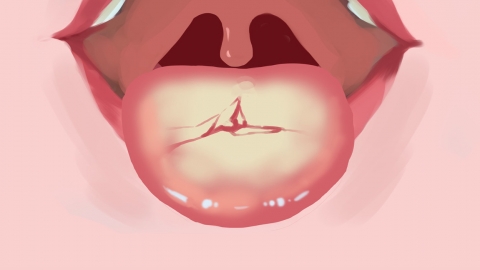What are the differences in symptoms between damp-cold and damp-heat?
Generally speaking, both damp-cold and damp-heat are common syndromes in Traditional Chinese Medicine (TCM). Due to their differing cold and heat attributes, they present obvious distinctions in symptom manifestation, mainly reflected in tongue coating and pulse conditions, bodily sensations of cold or heat, stool characteristics, urine condition, and skin and secretion presentations. The specific differences are as follows:

1. Tongue Coating and Pulse Conditions: Patients with damp-cold usually present with a white, greasy tongue coating, a swollen tongue body, and possible tooth marks along the edges. The pulse is typically deep-slow or slow-slipping. Patients with damp-heat often show a yellow, greasy tongue coating, a reddish tongue body, and a slippery-rapid or soft-rapid pulse. The differences in cold and heat attributes can be quickly distinguished through tongue and pulse examination.
2. Bodily Sensation of Cold or Heat: Individuals with damp-cold commonly feel cold, especially in the extremities, and exhibit marked cold intolerance. Symptoms are difficult to alleviate even in warm environments and worsen with exposure to cold, causing increased discomfort. Those with damp-heat often feel feverish, typically presenting with low-grade fever or afternoon潮hot flushes, accompanied by a heavy sensation in the body, marked heat intolerance, and persistent sticky discomfort even after sweating.
3. Stool Characteristics: Damp-cold patients usually have loose, unformed stools that are pale in color, increased bowel movements, and a sensation of incomplete evacuation after defecation. Their stools generally lack a strong odor. Damp-heat patients typically have sticky, unpleasant bowel movements, with stools that adhere to the toilet bowl and are difficult to flush away. The stool color tends to be yellowish or darkened and may be accompanied by a distinct fishy odor.
4. Urine Condition: Damp-cold patients have pale or light-colored urine, possibly with increased urine volume and no significant burning sensation during urination. Damp-heat patients tend to have darker yellow or reddish urine, possibly reduced urine volume, and may experience a burning or stinging sensation during urination. Some patients may also have notably odorous urine.
5. Skin and Secretion Manifestations: Damp-cold patients often have pale or dull skin, which may develop edema, and the skin feels cool to the touch. Female patients may experience excessive, clear, and odorless vaginal discharge. Damp-heat patients often have oily, reddened skin, prone to acne or eczema, with a warm sensation upon touch. Female patients may have thick, yellowish vaginal discharge with a strong odor.
Recommendations: Damp-cold individuals should focus on staying warm, avoid consuming raw or cold foods, and may benefit from warming foods such as ginger and lamb. Damp-heat individuals should maintain a dry and well-ventilated environment, avoid spicy and greasy foods, and may benefit from cooling and dampness-resolving foods such as coix seed and mung beans.




